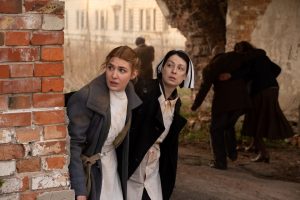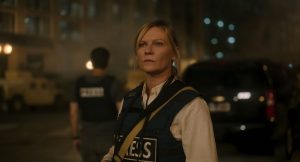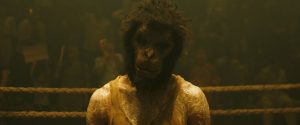Reviews include Irena’s Vow, The Beast, and Before I Change My Mind.
Quebec on Screen: An interview with Geneviève Dulude-De Celles
June 27, 2019
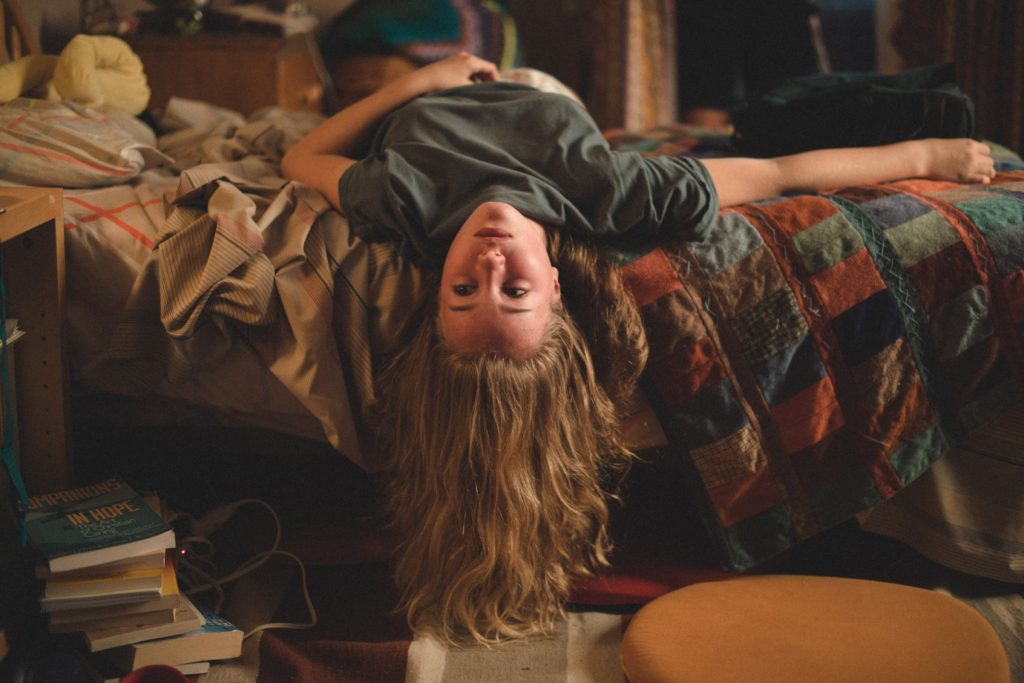
By Pat Mullen
A Colony director Geneviève Dulude-De Celles is part of a new wave of Quebecois filmmakers to be celebrated, but it’s often hard for audiences to see their work outside the festival circuit. Even if a critic wants to champion a hidden gem, film buffs in the rest of Canada don’t stand much chance of catching a Quebecois film unless the director’s name is Xavier or Denys. Fortunately, for Toronto cinephiles, the new distributor Game Theory Films and the Royal Theatre are hosting a three day showcase of Quebecois cinema, titled Quebec on Screen, to connect audiences with some of the best work this country has to offer.
One of those films is A Colony, Dulude-De Celles’ dramatic feature debut that pulled an upset Best Picture win at the Canadian Screen Awards earlier this year. The film also won Best Actress for Emilie Bierre’s remarkable performance as Mylia, a young woman who struggles to fit in during her first year of high school until she befriends Jimmy (played by Jacob Whiteduck-Lavoie), a local boy from nearby the Abenaki First Nations reserve, as well as the John Dunning Discovery Award for Dulude-De Celles. Her film is a delicately understated coming-of-age drama as Mylia learns what it means to be a citizen of this world and as her relationship with Jimmy inspires her to evolve and expand her worldview. A Colony’s accolades also include the youth prize at the Berlin Film Festival, the Grand Jury Prize and Audience Award at the Quebec City International Film Festival, and a trio of awards at the Whistler Film Festival including Best Canadian Feature.
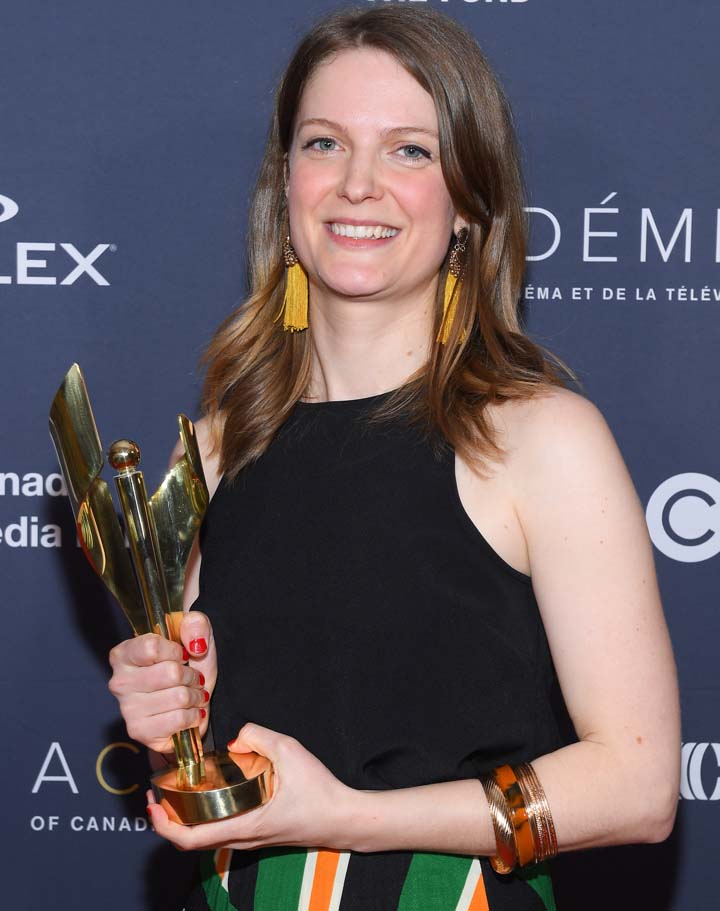
Photo by George Pimentel, courtesy of the Academy
A Colony establishes Dulude-De Celles as an auteur in the making thanks to her remarkable confidence with a cast of mostly young actors and the observant intimacy of her aesthetic that allows such an ensemble of newcomers to flourish on screen. The film offers a companion piece to the director’s 2015 feature documentary Welcome to F.L. (Bienvenue à F.L.), which observed the graduating class of Fernand-Lefebvre High School in Sorel-Tracy, Quebec, and her 2014 Sundance award-winning short The Cut (La Coupe), a long-take wonder that offered a tender moment between a daughter and her father. The three films all observe young people, particularly young girls, at pivotal moments in their lives. They’re thoughtful observations about youths struggling to develop their identities and establish roots in communities that move at a different pace from the globalized world.
TFCA member Pat Mullen spoke with Geneviève Dulude-De Celles ahead of the Quebec on Screen series to discuss A Colony, her must-see body of work, and the rewarding challenges of getting Canadian audiences to see Canadian films.
Pat Mullen: Congratulations on the wins at the Canadian Screen Awards! How did that night feel?
Geneviève Dulude-De Celles: That was a huge surprise because the film had a small release in English Canada. We were at the Whistler Film Festival, and we received a prize, but Whistler is a small festival in British Columbia. We didn’t have screenings in Toronto or any other big cities. The members of the Academy did their duty and watched the film online, I guess! [Laughs.] It was a beautiful surprise.
A Colony parallels Welcome to F.L. and The Cut in that they all tell stories about young people at pivotal moments in their lives and take place within the same region. When did you first begin the feature? Were you writing and in development while making your previous films?
Those three films are linked. I started to work on A Colony when we released my short film The Cut in Sundance in 2014. When I was coming back from Sundance, I talked about the project with my producer in the airplane. I wanted what I did with The Cut, having this character of a very young age and seeing the point of view of a 12-year-old girl. The [passage] from childhood to “teenagerhood” really interests me and I wanted to develop it further in a version longer than a short film. I started with that character in mind and that’s why the name of the character, Mylia [in A Colony], is named after the actress who played in The Cut, Milya Corbeil-Gauvreau.
That’s so interesting. What about Welcome to F.L.? How did that link?
When I got back from Sundance, I started to shoot my feature documentary. Being involved in that high school, being surrounded by teenagers, hearing their thoughts, and having them as the main characters really influenced me. I kind of researched my feature film through my documentary. With A Colony, I wanted to portray what I could not do with the documentary. For instance, the scenes where you follow Mylia intimately, like even following her into the toilet stall. [Where she locks herself in to hide from her classmates.] I couldn’t make that in a documentary. There are the limits. [Laughs.] All three films were within the same process for me. I don’t want to do stories about teenagers for all my career; it’s just that that one film went after the other and I had the impression that I could go further in that subject.
What was the process for casting a film with so many young actors?
We did casting outside of an agency. We published a casting call in a local newspaper, in different high schools and primary schools, and through our network. My goal was to reach that type of teenager who grew up in that specific area in the countryside. For me, the young actors that are involved in agencies and have more experience are often from urban areas and from [well-off] families. They’re well-spoken and don’t have strong accents. I wanted it to feel like a documentary and have actors who are close to their characters to create this authenticity.
For Welcome to F.L., you gave students questionnaires before interviewing them to understand their experiences. How did you work with Emilie and the other actors to understand their experiences?
It was a very long process and we were looking for actors for about five months. When we cast everybody, I did two months of rehearsals with them. Some actors had more experience. That was the case with Emilie because she’s been in the industry since she was five years old. I knew that her character was so silent and she had to express herself through little gestures and create her inner world with her looks and her behaviour.
We really analysed the script to see the progression of the character. She understood where the character came from due to her difficulty making friends in school. That is well known in Quebec because Emilie is a spokesperson for an organisation about bullying [Fondation Jasmin Roy]. She’s suffered from bullying and she was all by herself in school, so she really connected to the character. We both knew what was underlying her words and her lines.
Emilie’s parents are from France and she speaks very good French. She doesn’t have a strong regional accent, so we worked together through all the lines in the script. We wrote them down phonetically in order to express the accent. She really worked hard on that.
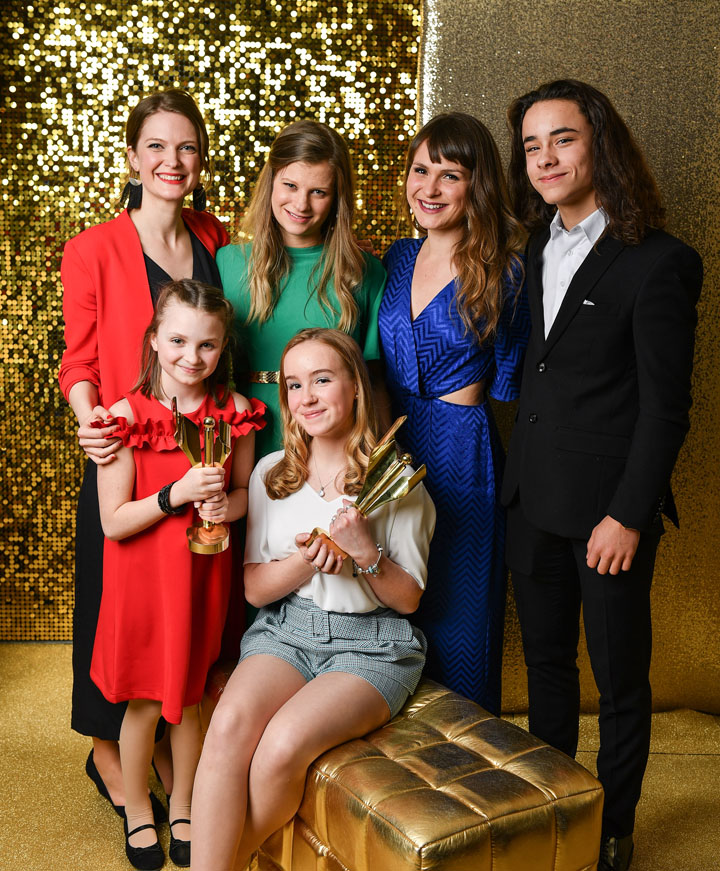
Photo by George Pimentel, courtesy of the Academy of Canadian Cinema and Television.
What about the actors with less professional experience? I loved Irlande Côté as Mylia’s sister. She’s such a natural.
We coached them, made sure they were comfortable when they get on the set, and used improvisation. I really tried to make it sound as natural as possible. The people I cast were very close to their characters, so they could already express what they were as human beings.
Irlande, Emilie, and Jacob all rehearsed together before they were on set. They created a beautiful relationship. There’s a line in the film where Irlande says to Emilie, “You’re the woman of my life.” I stole that line from them. They used to say that to each other because they really fell in love with each other like sisters.
The scene in the classroom where Jimmy has to endure listening to the textbook’s version of Indigenous history is very powerful. What inspired that?
The inspiration for that scene, and for the First Nations character, Jimmy, came from when I was young, living nearby Odanak, the Abenaki community in the film. When I was young, I looked at that community with fear because I didn’t know them. It’s a cliché, but I didn’t have the chance to go beyond my prejudice.
When I was older, I had the chance to work with Wapikoni Mobile, the studio that travels from one [Indigenous] community to another. They bring filmmaker mentors into communities who live there for one month creating short films with the youths. I was a filmmaker mentor for four years—I spent one month per summer in an Innu community in Quebec. That’s when I realized how much I didn’t about First Nations culture. I’d been traveling around the world and I knew more about other cultures than I did about the culture that shared the territory I lived in. It made me look back at the [Abenaki] community who were my neighbours and look back at where my prejudice came from. When I was talking about that with some First Nations teenagers and youths, they said they felt like they are not part of the group. They don’t feel comfortable when this content is discussed in history class.

Jacob conveys that sentiment so well in that scene. You can feel the tension. Was that a real textbook that the students read from in the film?
The scene is rewritten based on actual books used by schools. The real books are even worse—I can assure you I’ve read many editions! The books are still really Euro-centric. They talk about the “us” like erasing all other identities to belong to a European heritage. Of course, some books are more sensitive and things are changing. Two years ago that they were talking about including more First Nations’ perspectives in schools, so we’ll see.
I was so surprised—and relieved—to see so little use of technology and social media in the film. What inspired that? How did the young actors react to having a life off-screen without Facebook, Snapchat, and whatever the kids use these days?
I don’t know if you know Stéphane Lafleur’s films?
Oh, yes. I’m a big fan of Tu dors Nicole.
Oui! Tu dors Nicole. I wanted to have a sense of timelessness like his films. I didn’t want it to feel like something from another time.
Right. Technology dates it.
And for some families, especially if they don’t have a lot of money, not every 12-year-old child has a cellphone. For Mylia, her family is a bit more bohemian with her mother being a contemporary dancer. This family would not have cellphones. But, for instance, Jacinthe, Mylia’s friend, has one and she is always playing with it. I tried to relate the cellphone to a specific character because I didn’t want everybody to have one. I don’t think that it’s the reality.
And that makes Jacinthe more detached and maybe not as grounded Mylia.
I didn’t want to make a comment about what it is like to be a teenager in, let’s say, 2017 when I shot the film. It was about the timeless feeling of coming out of childhood and feeling lost in the new environment, learning how to belong, and how to find solace. It was also the case in Welcome to F.L. There are pretty much no cellphones in that film. Some of those kids have cellphones, but I didn’t feel it was interesting to film that.
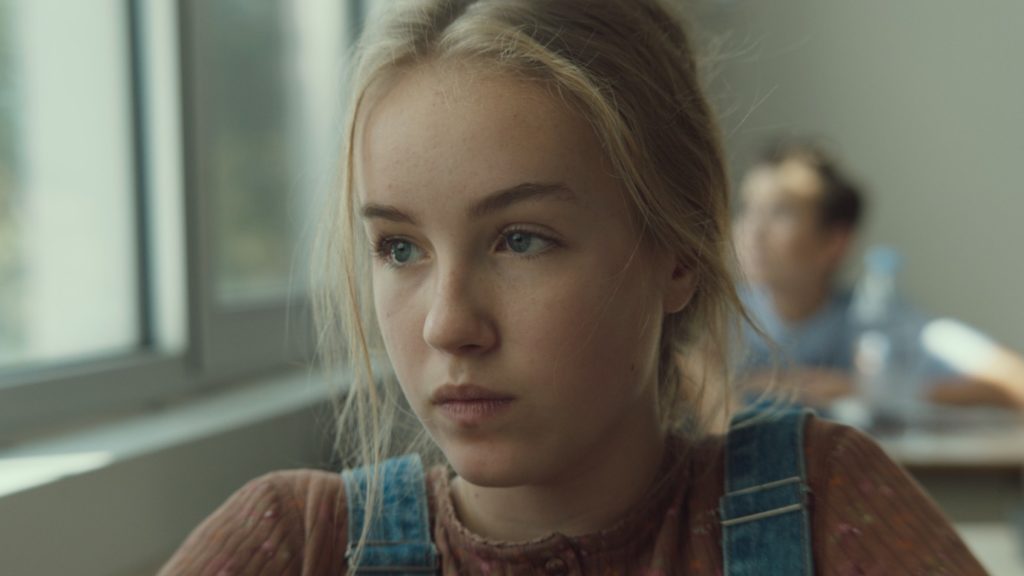
You also mentioned the intimacy of the cinematography and the way it often follows Emilie with long takes and often shoots from behind her. It reminded me of the Romanian New Wave, and then I was so surprised to see that you taught in Bucharest! Did that have an influence on your aesthetic?
That’s a compliment. When I was 21, I lived for six months in Bucharest, so it’s a tribute to my second home. I’m currently writing a film about immigration with a character who is Romanian but now Canadian. He has to return to his country of origin 30 years after leaving it.
When I was in Bucharest in 2016, I was impressed by the cinema there. It felt like a nouvelle vague. They didn’t have many [resources] for production and they still managed to do incredible films. That was an inspiration for me. For instance, I love 4 Months, 3 weeks and 2 Days and its mise-en-scene, how it follows the characters like a portrait. I’ve been to colleges lately speaking about A Colony and I show a scene from 4 Months, 3 Weeks and 2 Days as a reference. It’s the dinner scene where there’s a character in the middle of the frame and people are all around her. Everybody’s speaking and she’s silent, and you really relate to that character even though people talk all around her. There’s a scene in A Colony where a character is in the gym waiting to be chosen for one of the teams. There are people all around her and she’s in the middle of the frame. It was a tribute to that image and that mise-en-scene.
In the final scene of the film, Mylia’s final gesture and what she says is inspired by a Romanian film that influenced me when I was in college. It’s The Oak by Lucian Pintilie.
I haven’t seen that one, so I’ll have to check it out. You grew up in Sorel-Tracy, where Welcome to F.L. was shot, which is not far from Pierreville, the location for A Colony, and Yamaska, where The Cut takes place. What keeps drawing you back home?
I wanted to represent how there are several types of landscapes in Quebec. I don’t like how often we see a bucolic countryside image. There are different landscapes in the countryside, different types of architecture, and different types of people. It could have been another region. [Sorel] just had the right landscape that was not just a beautiful countryside surrounded by cornfields and beautiful little forests. I thought it was inspiring and, of course, I grew up in that environment, so it influenced my memories and my imagination. I think I’ll always work that way—by being as specific as possible and by not representing generic ideas of places.
The film is very timely with its question of how one becomes a citizen of the world and Quebec is making headlines right now with controversies surrounding the question of citizenship. How does A Colony contribute to the conversation of citizenship?
I didn’t want to push an answer. I wanted to raise a question. If I can have a discussion with the public, or if the audience sees the film and reflects about that question, I’ve done my job. When I was doing the documentary, I was really interested in the duty of the school in educating students to become citizens. It’s one of the beauties of public school. It’s an important moment of someone’s life because when they come out of childhood, they follow their parents’ beliefs. The transition between primary school and high school is such an important moment because you construct your personality and you own thoughts.
I wanted to reflect the macro subject, like the intimate story of this girl will becomes friends with the First Nations boy. It’s her first encounter with marginality, but she has a lot of pressure to join the [status quo] and fit in. For the micro level, as a citizen, you’re always asking where you belong, what are you attached to, and what groups define you. It’s still difficult to step out of the group, make your own decisions, and be unpopular. Where I come from, this French/white heritage within Canada, I always considered myself a minority and on the margins within English culture. Then I realized that we have the same position with the First Nations because we are the group in power and they are the minority. It was interesting to have this self-critique.
At the beginning of the conversation, you mentioned the how film hasn’t screened as much outside of Quebec. What are some of the challenges you’re experiencing in getting your films screened in English Canada? This film won Best Picture from the Academy and yet it’s fairly hard to see.
It’s funny because the film traveled to a lot of international festivals. It’s been bought in Sweden where it will be released in 20 theatres, as well in France. When I was talking to my French distributor, I told him we released the film in 12 theatres in Quebec and he said, “Oh, what about the rest of Canada?” It’s another market. You have to find a new distributor who is based in Toronto or in English Canada. It’s different; it’s difficult.
It’s also more and more difficult to reach an audience in Quebec. There are so many American films in theatres. Theatres take their films because they have the money for publicity. When Hollywood films screen in Quebec, they’ll be in 80 theatres and spend, like, $500,000 on publicity. When we arrive with $15,000 in publicity and there aren’t many screens available, it’s really hard to compete.
What’s the answer?
We have work to do on education. In Europe, there’s a culture of cinephilia and education in independent and auteur-driven films, but here we consume so much American film. I can see that when I meet audiences: the awakening. It’s not a question of quality; it’s just a question of introduction and education. Teenagers are obligated to read some books from Quebec authors—I wish we would have that for films. I had one teacher in high school who decided to screen some auteur films. It opened our minds, but it was just because he wanted to. It wasn’t on the agenda.
I think there’s a great amount of work that should be done to introduce the audience to auteur films, and I wish that the public would be more curious. I wish that the fact that we won at the Canadian Screen Awards would make the public say, “Let’s try. Let’s see what’s happening in Quebec cinema.” It’s a question of the resources we have to reach that audience. We are making good films in Canada, our cinema is traveling all around the world, and people from outside of Canada know our cinema and know our directors, but it’s still difficult within our own country to reach the public.
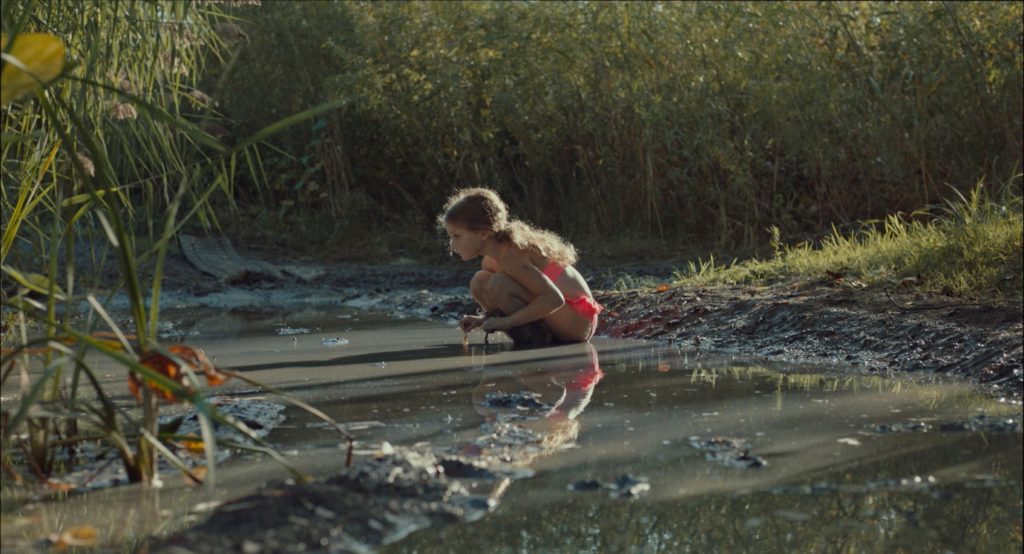
I like how this series that’s coming to Toronto is a step toward doing that with some of the up and coming filmmakers. Who are some of the other filmmakers from Quebec who audiences should seek out and discover if they want to see more?
For sure the work of Philippe Lesage and Maxime Giroux that will be part of the Quebec on Screen series in Toronto. They deserve attention. There’s Sophie Dupuis, who directed Chien de garde [last year’s Oscar submission]. It was her first feature film and now she’s shooting her second feature. There are a lot of good documentary filmmakers as well. And Anne Émond [2015 TFCA Jay Scott Prize winner], Stéphane Lafleur—he did the editing for A Colony, so I’m kind of sold, but I really like his previous films [Tu dors Nicole and En terrains connus]. His films were like something I hadn’t seen before. They have such an interesting approach.
There are also a lot of filmmakers making incredible short films. At the Oscars, there were two short films [nominated] and those two filmmakers are really great. Marianne Farley, who did Marguerite, received funding from Telefilm Canada to do her first feature [Au nord d’Albany]. I’m really excited to see that. A friend of mine, Joanne LeBlanc, will release her first feature [Les nôtres] with Emilie Bierre as the main character. She did a lot of short films. And Kristina Wagenbauer made her first film Sashinka with a micro budget. I’m impressed by people who can do that. I have a “normal” budget, but they have, like, nothing and she still has a strong signature. It’s really exciting to be part of that community and to see all those talented filmmakers.
A Colony screens at The Royal on July 5 and 6.
Also screening in the Quebec on Screen series are Philippe Lesage’s Genesis and Maxime Giroux’s The Great Darkened Days.
-Words and interview by Pat Mullen.

